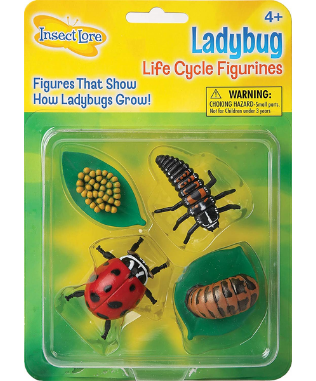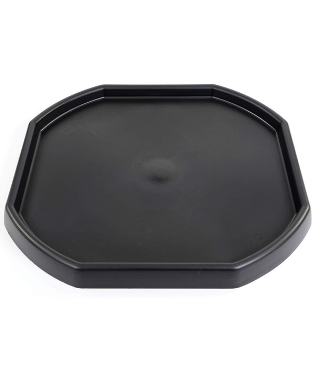Not wanting Cian (18months old) to miss out on the excitement of our ladybird release, his brothers’ set up this taste-safe sensory play activity.
Resources
- Tuff tray
- Ladybird life cycle figurines
- Jelly
- Angel delight
- Blueberries
- Spoons
- Fine motor tools
Method
As soon as Cian spotted the tray, he went straight for the spoon. He’s never seen angel delight before, but I knew it would go straight in his mouth. That’s why our messy play at this age is all edible.
Armed with two spoons, he alternated eating with each hand, before trying to scoop with two hands at once.
Cici swapped one of the spoons, for one of the metal measuring cups. Using the bottom of the cup to pick up the angel delight, rather than using a scooping action.









Next, he dipped one of the other tools in and licked it like an ice cream.
Having scooped the ladybird out of the jelly, he examined it for a while before placing it back where he found it.
I wondered how long it would take Cian to spot the blueberries. They were still chilly from the fridge, but he didn’t seem to mind because he always shakes his head from side to side when he’s enjoying something. “More” is one of the few words he’ll say.
Next, he started putting the figures from our ladybird lifecycle in the measuring cups.
By accident, Cian realised he liked the feeling of angel delight on his feet, so started using the spoon to put it on to his toes.









He tried adding jelly to his nose.
He found the jelly harder to pick up on the bottom of his measuring cup, than the angel delight. But he was happy to discover the banging sound it made when he tried.
The other sign that Cici’s enjoying himself, is when he raises his eyebrows up and down.
Yoshi watched in horror as Cian intentionally spread the jelly all over his feet.
This is only a short video because I held on to Cian so he didn’t fall. He loved smearing the mixture around the tray.
Finally, we added some water to the tray to make it a new sensory experience. Ioan was still watching his youngest brother, with a mixture of horror and fascination.
DfES Outcomes for EYFS (2013)
Communication and language
Listening and attention (16 to 26 months)
- Selects familiar objects by name and will go and find objects when asked, or identify objects from a group.
- Understands simple sentences (e.g. ‘Throw the ball’.)
Speaking (8 to 20 months)
- Uses sounds in play, e.g. ‘brmmm’ for toy car.
Physical Development
Moving and handling (8 to 20 months)
- Enjoys the sensory experience of making marks in damp sand, paste or paint.
- Passes toys from one hand to the other.
Personal, social and emotional development
Self-confidence and self-awareness (16 to 26 months)
- Gradually able to engage in pretend play with toys (supports children to understand their own thinking may be different from others).
Mathematics
Shape, space and measures (16 to 20 months)
- Enjoys filling and emptying containers.
Understanding the world
The world (16 – 26 months)
- Explores objects by linking together different approaches: shaking, hitting, looking, feeling, tasting, mouthing, pulling, turning and poking.
The world (22 – 36 months)
- Enjoys playing with small-world models such as a farm, a garage, or a train track.
Expressive arts and design
Exploring and using media and materials (8 to 20 months)
- Explores and experiments with a range of media through sensory exploration, and using whole body.
























